
Life Sciences in Space Research
Scope & Guideline
Exploring the Frontiers of Life Beyond Earth
Introduction
Aims and Scopes
- Bioregenerative Life Support Systems:
The journal emphasizes research on bioregenerative life support systems, focusing on how biological processes can be utilized to sustain human life in space. This includes studies on plant growth, microbial interactions, and nutrient recycling. - Radiation Effects and Countermeasures:
A core focus of the journal is the investigation of space radiation and its biological effects. This includes research on radiation-induced health risks, the development of protective measures, and studies on radiation's impact on various physiological systems. - Human Health and Performance in Space:
The journal addresses the physiological and psychological challenges faced by astronauts during space missions. This includes studies on neuro-ocular syndrome, musculoskeletal health, cognitive function, and mental health, aiming to improve astronaut performance and wellbeing. - Microgravity and its Biological Impacts:
Research on the effects of microgravity on biological systems is a significant area of focus. This encompasses studies on cellular responses, gene expression, and the physiological adaptations of various organisms, including plants and animals, in reduced gravity environments. - Astrobiology and Planetary Protection:
The journal also explores astrobiology and the implications for planetary protection. This includes studies on extremophiles, the potential for life on other planets, and the ethical considerations of contaminating extraterrestrial environments.
Trending and Emerging
- Innovative Countermeasures for Space Health:
Recent studies are increasingly focused on developing innovative countermeasures to mitigate health risks associated with spaceflight, such as neurostimulation techniques and biophysics of medications tailored for microgravity. - Sustainable Food and Water Systems for Space Missions:
Research on sustainable food and water systems is on the rise, with a focus on bioregenerative systems that recycle nutrients and cultivate food in space. This trend is crucial for long-duration missions on Mars and beyond. - Microbiome Research in Space Environments:
There is an emerging interest in understanding the gut microbiome and its implications for astronaut health. Studies examining the effects of microgravity on microbial diversity and function are becoming more prevalent. - Psychological and Cognitive Health of Astronauts:
Research addressing the psychological and cognitive health of astronauts is gaining traction. This includes studies on social isolation, cognitive performance, and mental health interventions tailored for space missions. - Advancements in Radiation Measurement and Protection:
With the increasing recognition of radiation risks, there is a growing emphasis on advancements in radiation measurement technologies and protective strategies to safeguard astronauts during missions.
Declining or Waning
- Traditional Biomedical Research:
There has been a noticeable decrease in studies focusing solely on traditional biomedical research unrelated to space environments. As the emphasis shifts towards space-specific challenges, research that does not directly relate to space conditions is becoming less prominent. - General Agricultural Practices:
Research on general agricultural practices that do not consider the unique challenges of space environments is waning. The journal is increasingly prioritizing studies that specifically address plant growth in microgravity or other space-related conditions. - Basic Biological Mechanisms:
While foundational biological research remains important, there is a reduction in publications solely dedicated to basic mechanisms without direct relevance to spaceflight. The journal is favoring applied research that links biological processes to space exploration challenges.
Similar Journals

GEOMAGNETISM AND AERONOMY
Advancing Knowledge in Geophysics and Planetary ScienceGEOMAGNETISM AND AERONOMY, published by MAIK NAUKA/INTERPERIODICA/SPRINGER, is a prominent journal dedicated to advancing the fields of geophysics and planetary science. With ISSN 0016-7932 and E-ISSN 1555-645X, this journal serves as a critical platform for researchers to disseminate their findings on geomagnetic phenomena and aeronomical studies, fostering a deeper understanding of Earth's magnetic field dynamics and atmospheric interactions. Spanning publishing years from 1996 to 2024, it is categorized in the Q3 quartile for geophysics and Q4 for space and planetary science, reflecting its positioning within the academic landscape. Although not open access, readers and researchers can access valuable insights into geomagnetic and atmospheric research, contributing to ongoing discourse in these vital scientific domains. With a focus on innovative research, GEOMAGNETISM AND AERONOMY remains an essential resource for professionals and students aiming to deepen their expertise in Earth and planetary sciences.
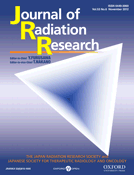
JOURNAL OF RADIATION RESEARCH
Fostering innovation in radiation studies for a healthier future.JOURNAL OF RADIATION RESEARCH, published by Oxford University Press, is a prominent peer-reviewed journal focusing on the diverse fields of radiation science, including health, toxicology, and radiology. Since its inception in 1960, this open-access journal has provided a critical platform for the dissemination of high-quality research, making it accessible to a global audience of researchers, professionals, and students. With a consistent track record, the journal holds an impressive impact factor and is categorized in Q2 of Radiation studies and Q3 in Health and Toxicology as per the 2023 rankings, reflecting its influential role in shaping contemporary discourse in the field. The journal also boasts notable rankings within Scopus, further underscoring its importance in advancing knowledge and innovations related to radiation. Spanning from 1960 to 2024, the JOURNAL OF RADIATION RESEARCH remains at the forefront of scientific exploration and is essential reading for anyone committed to advancing the understanding of radiation and its effects.

Space: Science & Technology
Transforming Ideas into Aerospace RealitiesSpace: Science & Technology is a premier, open-access journal published by the American Association for the Advancement of Science, dedicated to advancing knowledge in the rapidly evolving fields of aerospace engineering and space sciences. Since its inception in 2021, the journal has rapidly established itself as a vital resource, achieving an impressive Q1 ranking in Aerospace Engineering and Q2 ranking in Space and Planetary Science as of 2023. With a Scopus rank placing it 45th out of 153 in Aerospace Engineering and 47th out of 104 in Space and Planetary Science, it serves as a critical platform for researchers, engineers, and students alike to disseminate their findings and engage with the latest developments in their field. The journal encourages innovative research articles, technical notes, and reviews that push the boundaries of what's possible in space exploration and technology. With its commitment to open access since 2021, Space: Science & Technology ensures that pioneering research is readily available to a global audience, promoting collaboration and knowledge sharing in an increasingly interconnected scientific community.

Open Life Sciences
Unlocking Knowledge for a Healthier TomorrowOpen Life Sciences is a distinguished open-access journal published by DE GRUYTER POLAND SP Z O O, dedicated to advancing research across diverse disciplines in the life sciences. Since its inception in 2014 and transitioning to open access in 2015, the journal has become a pivotal platform for researchers, fostering the dissemination of high-quality scientific work while ensuring that valuable findings are freely accessible to the global community. With an impressive categorization into Q2 in Agricultural and Biological Sciences and Q3 in several other fields including Biochemistry and Immunology as of 2023, Open Life Sciences promotes innovation and knowledge sharing across its broad spectrum of topics. The journal's commitment to excellence is reflected in its competitive Scopus rankings, making it an essential resource for professionals and students alike who are keen to stay at the forefront of life sciences research.
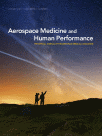
Aerospace Medicine and Human Performance
Enhancing Safety Standards in Air and Space TravelAerospace Medicine and Human Performance is an influential journal published by the Aerospace Medical Association, serving as a vital resource for researchers and professionals dedicated to the study of human performance within the realms of aerospace environments. With an ISSN of 2375-6314 and an E-ISSN of 2375-6322, this journal has garnered attention since its inception in 2015 and is dedicated to the dissemination of innovative research, reviews, and case studies that address the complexities of human factors in aviation and space travel. Despite being classified in the Q4 quartile in both Medicine (Miscellaneous) and Public Health, Environmental and Occupational Health categories as of 2023, and its respective Scopus rankings showing opportunities for growth, the journal plays a critical role in bridging gaps in knowledge and promoting advancements in medical practices and safety standards in aerospace contexts. The journal operates under an Open Access model, ensuring that valuable research is readily available to a diverse audience. As it converges into the years up to 2024, it remains committed to enhancing the collaboration and communication within the aerospace medical community.

Journal of Space Safety Engineering
Exploring the intersection of engineering and space safety.The Journal of Space Safety Engineering, published by ELSEVIER, is a pioneering platform dedicated to advancing the field of aerospace safety and engineering. Since its inception in 2014, this journal has catered to researchers and professionals focusing on the crucial intersection of aerospace engineering and safety, risk, reliability, and quality management. With an ISSN of 2468-8975 and E-ISSN of 2468-8967, it has established itself within the academic community, currently holding a Q3 ranking in both Aerospace Engineering and Safety, Risk, Reliability, and Quality categories, according to the 2023 metrics. The journal, which covers converged years up to 2024, is instrumental for those seeking to explore innovative safety solutions in space missions and exploration, making it an essential resource for students, industry professionals, and researchers alike. Although it is not open access, it remains a credible source of impactful studies that contribute to enhancing safety protocols and engineering practices in aerospace endeavors. With a strong focus on rigorously vetted research, the Journal of Space Safety Engineering ensures that important advancements in this dynamic and vital field are shared widely among experts and stakeholders.
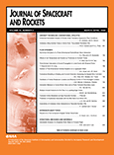
JOURNAL OF SPACECRAFT AND ROCKETS
Transforming Ideas into Aerospace Reality.The Journal of Spacecraft and Rockets, published by the American Institute of Aeronautics and Astronautics, serves as a premier platform for disseminating cutting-edge research in the fields of aerospace engineering and space science. Established in 1964, this esteemed journal has evolved over nearly six decades, solidifying its reputation with a consistent publication history through 2024. With an impact factor positioning it within the Q2 quartile in both Aerospace Engineering and Space and Planetary Science categories, it ranks as a vital resource, featuring high-quality manuscripts that address the latest advancements and findings in spacecraft design, propulsion systems, and austere planetary exploration. The journal's rigorous peer-review process ensures that articles meet the high academic standards expected by practitioners in the aerospace sector. Researchers, engineers, and students alike will find the Journal of Spacecraft and Rockets to be an invaluable resource for both foundational knowledge and innovative research developments, advancing the future of aeronautics and astronautics.

SPACE SCIENCE REVIEWS
Unraveling the Mysteries of Space ScienceSPACE SCIENCE REVIEWS, published by Springer, is a premier interdisciplinary journal that has been at the forefront of space science research since its inception in 1962. With an impressive impact factor and a distinguished Q1 ranking in both Astronomy and Astrophysics, as well as Space and Planetary Science, it stands as a leading platform for the dissemination of cutting-edge research. The journal encompasses comprehensive reviews covering a diverse array of topics, from cosmic phenomena to planetary exploration, serving as a critical resource for researchers, professionals, and students alike. Although it operates primarily under a subscription model, its commitment to excellence and rigorous peer-review process ensures that each article meets the highest standards of scientific integrity. With its headquarters in the Netherlands, SPACE SCIENCE REVIEWS is positioned strategically to foster global collaboration in the field, making it an invaluable asset for anyone interested in the ever-evolving landscape of space science.
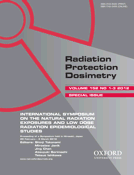
RADIATION PROTECTION DOSIMETRY
Pioneering research for a safer tomorrow in radiation protection.RADIATION PROTECTION DOSIMETRY is a vital academic journal dedicated to the field of radiation protection, published by Oxford University Press. With an ISSN of 0144-8420 and an E-ISSN of 1742-3406, this journal serves as a platform for groundbreaking research and developments in dosimetry, health physics, and radiation safety spanning over four decades since its inception in 1981. Recognized with a Q3 ranking in multiple categories including Medicine (miscellaneous) and Public Health, this journal plays a key role in disseminating important findings that inform policy, enhance practice, and promote the protection of both individuals and the environment from radiation hazards. While currently not available as Open Access, the journal's curated content is essential for researchers, professionals, and students dedicated to advancing knowledge in radiation protection and related areas. Interested readers will find the latest research trends, case studies, and reviews invaluable for their work and studies within this multidisciplinary domain.
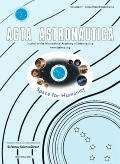
ACTA ASTRONAUTICA
Inspiring Innovation in Aerospace EngineeringACTA ASTRONAUTICA is a premier journal in the field of aerospace engineering, dedicated to advancing knowledge in space exploration and technology. Published by PERGAMON-ELSEVIER SCIENCE LTD in the United Kingdom, this journal boasts a prestigious Q1 ranking within its category as of 2023, positioning it in the top tier of aerospace engineering publications. With an ISSN of 0094-5765 and an E-ISSN of 1879-2030, ACTA ASTRONAUTICA has been a crucial resource for researchers and professionals since its inception in 1974, continuing to publish cutting-edge research through to 2024. The journal focuses on a wide range of topics, from orbital mechanics and spacecraft design to astronautics and planetary science, aiming to inspire innovation and facilitate the exchange of ideas among scholars, industry experts, and students. ACTA ASTRONAUTICA is ranked 19th out of 153 in its field, highlighting its importance and influence within the aerospace community. Researchers seeking a reputable platform to share their findings will find this journal to be an essential part of the academic discourse in aerospace engineering.